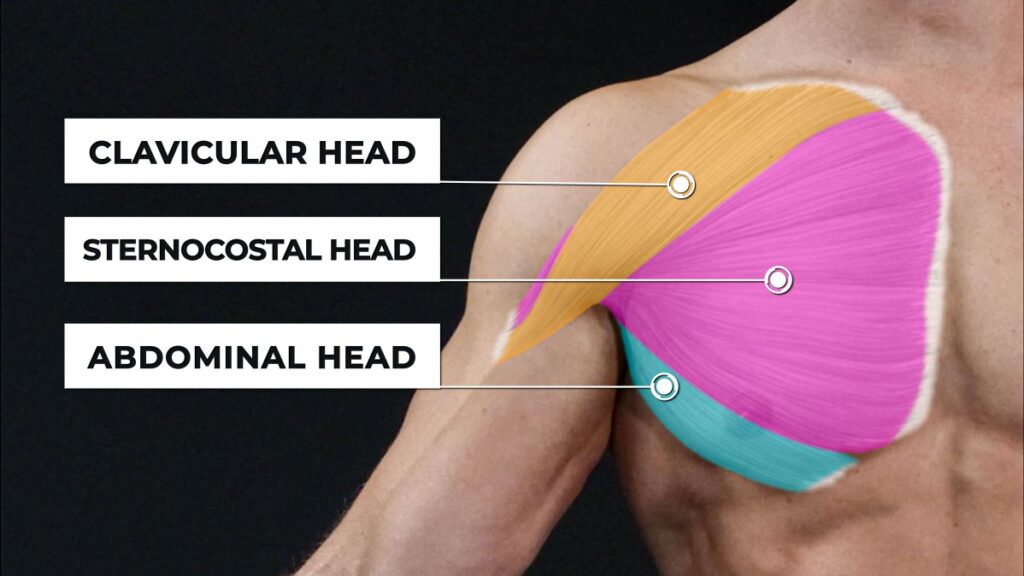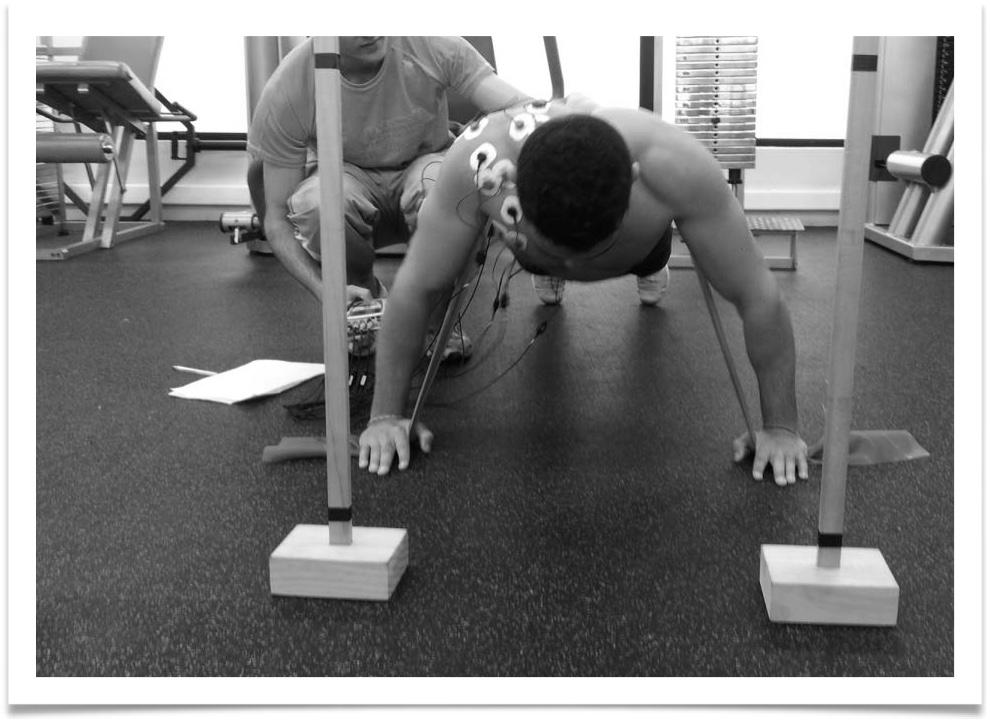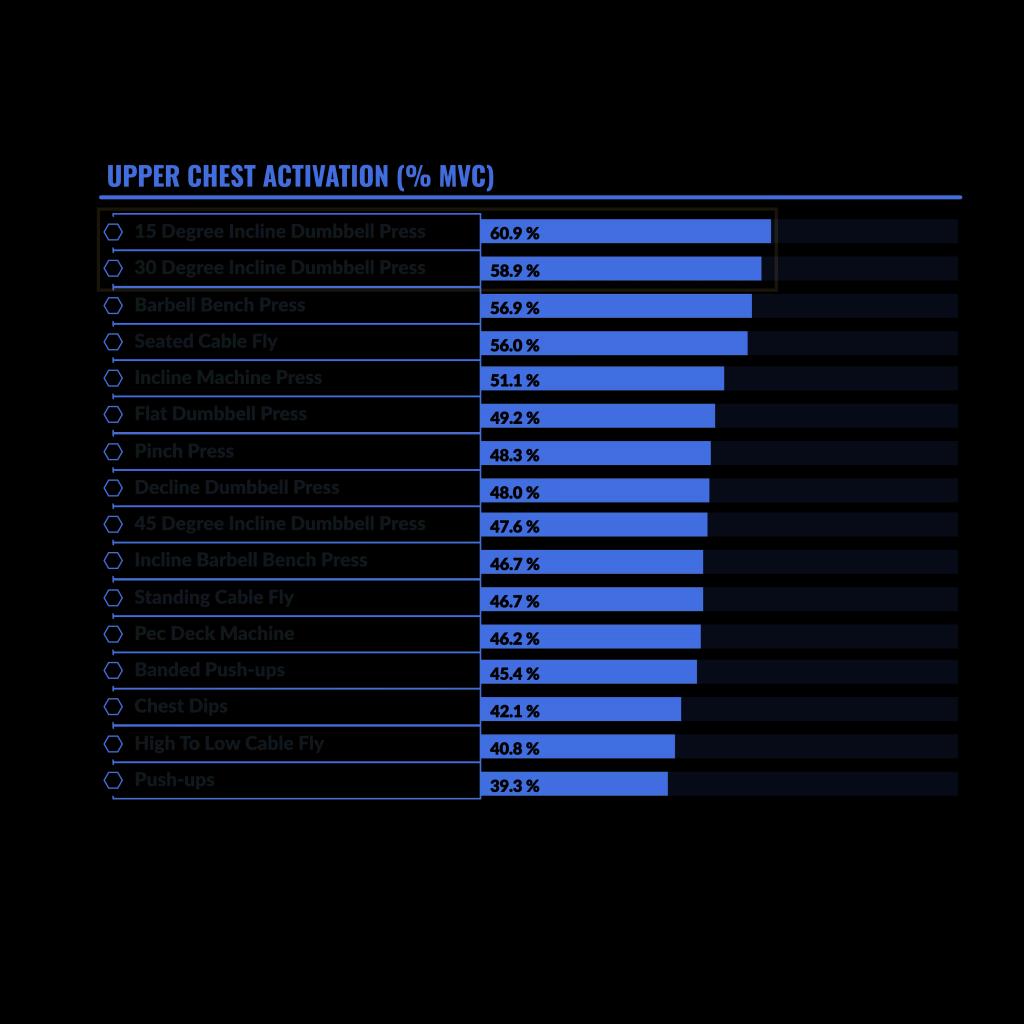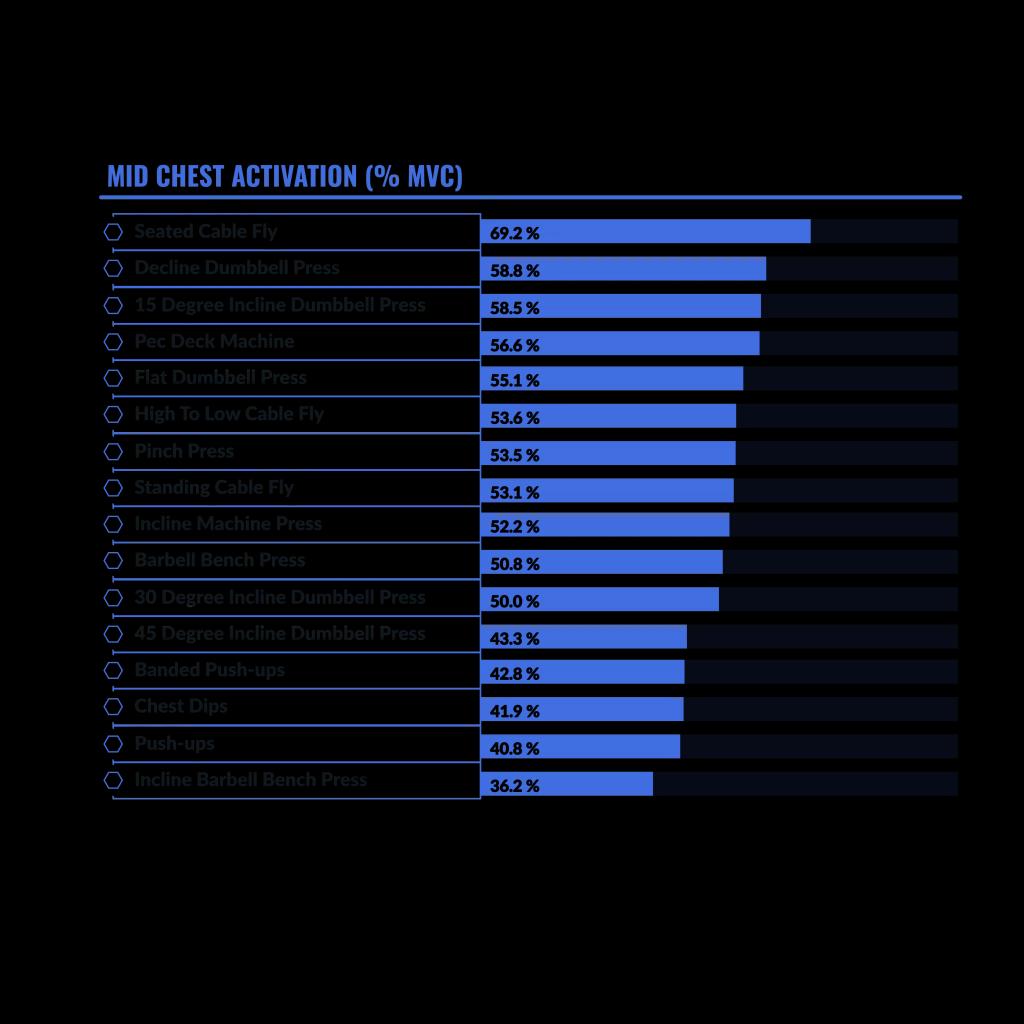Monday can be called as the ‘International chest day’ in gyms around the world. A big muscular chest, made famous by the bodybuilders of the golden era like Arnold, franco columbo, serge nubret etc.; is probably the most attractive muscle in the upper body musculature.
Your chest muscle is divided into the following muscle groups:
- Pectoralis Major
- Pectoralis Minor

The pectoralis major is divided into 3 heads, clavicular (upper chest), sternocostal (middle chest) and abdominal head (lower chest).

However, there are exercises, which activate particular muscles better than the other. That is the reason, a workout should be a mix of different movements, targeting the complete musculature.
There are number of different exercises which you can perform in the gym to build up your chest, but research has identified certain movements, which activate each muscle of the chest, better than the others. Knowing these movements, will help you save time, and design a better strength & hypertrophy program for yourself or your clients.
These studies have tested, the EMG, MVC (Maximum Voluntary Contraction), and Mean & Peak Activation, of the muscle.
A study, assessed 20+ chest exercise, including bodyweight exercise. Based on this experiment, here are the top three exercises in terms of mean and peak activity for each muscle part:
Upper Pec
Mean: Mid Pulley Crossover, Band Push Up, JC Band Press
Peak: Dumbbell Incline Press, Guillotine Press, JC Band Press
Mid Pec
Mean: Dumbbell Bench Press, Floor Press, Fly
Peak: Guillotine Press, Dumbbell Bench Press, Fly
Lower Pec
Mean: Weighted Dip, Blast Strap Push Up, Guillotine Press
Peak: Guillotine Press, Fly, Weighted Dip
The form used for the guillotine press was straight from late Iron Guru Vince Gironda: feet on the bench, no arch, elbows flared out, wider grip, bar lowered to the neck. It’s no surprise the guillotine press works much more pec than the bench press.
Another study, used electromyography (EMG) to determine which chest exercise(s) elicited the most muscle activation of the pectoralis major muscle. Subjects for this study were 14 males, 19-30 years of age. The first day of testing a 1RM was determined for the exercises: barbell bench press, bent-forward cable crossovers, seated chest press, incline dumbbell flyes, and peck deck machine. Subjects performed five repetitions of each exercise, using 80% of their 1 RM.
This study found the pectoralis major to be activated the greatest during the barbell bench press. There was not a significant difference between the barbell bench press when compared to the peck deck machine or the bent-forward cable crossovers. It was therefore concluded that these chest exercises could be used interchangeably to train the pectoralis major.
The study, also tested body weight exercises like parallel bar dips, standard pushups, suspended pushups & swiss ball pushups. Of course the muscle activation for these exercises was lower, as compared to the weighted exercises, because they used only body weight, but separate studies have shown a different story.
For e.g. A 2015 study, evaluated the muscle activation during 6 repetition maximum (6RM) bench press and push-up, where subjects were divided into 3 groups (i.e., 6RM bench press group, 6RM elastic band push-up group, or control group) to evaluate muscle strength gains. Thirty university students with advanced resistance training experience participated in the study.

(push-ups testing using elastic bands in the study)
The researchers found that, elastic-resisted push-ups induced similar muscle activations levels and strength gains as the bench press when these exercises are performed under the same conditions (i.e., intensity, volume, rest, exercise technique, and speed of movement).
Hence, when the same conditions are reproduced and the aforementioned exercises reach the required intensity, comparable EMG values result in comparable muscle strength gains.
Another study, assessed 16 different chest exercises:
- Push-ups
- Banded push-ups
- Standing cable fly
- High to low cable fly
- Seated cable fly
- Chest dips
- Barbell bench press
- Incline barbell bench press
- Flat dumbbell press
- Incline machine press
- 15-degree incline dumbbell press
- 30-degree incline dumbbell press
- 45-degree incline dumbbell press
- Decline dumbbell press
- Pinch press
- Pec deck machine
The subjects performed one exercise, 1 set of 5 reps, then took a 5 min rest, and repeat the same with next exercise. Here is what the study found:



Now if we take a conclusive review of the best exercises, there seem to be a range of movements which can be a great addition in your workouts, for optimal chest development, i.e. development of all three heads. And, when closely observed, all of these movements are the very basic ones, which have been used since decades for massive chest development.
Here are the chosen few:
Upper Chest: incline dumbbell press (15-45deg), barbell bench press, incline machine press, mid pulley crossover/seated cable flye; weighted pushups.
Middle Chest: dumbbell bench press, dumbbell flye, seated cable flye, incline dumbbell press (15-45deg), pec dec flye
Lower Chest: weighted bar dips, flat dumbbell press, pec dec flye, seated cable flye, decline dumbbell press, barbell bench press
Overall Chest development: dumbbell bench press (all 3 angles), barbell bench press (incline & flat), pec dec flye, cable crossover (mid-range & high to low), parallel bar dips, pushups, suspension pushups.



